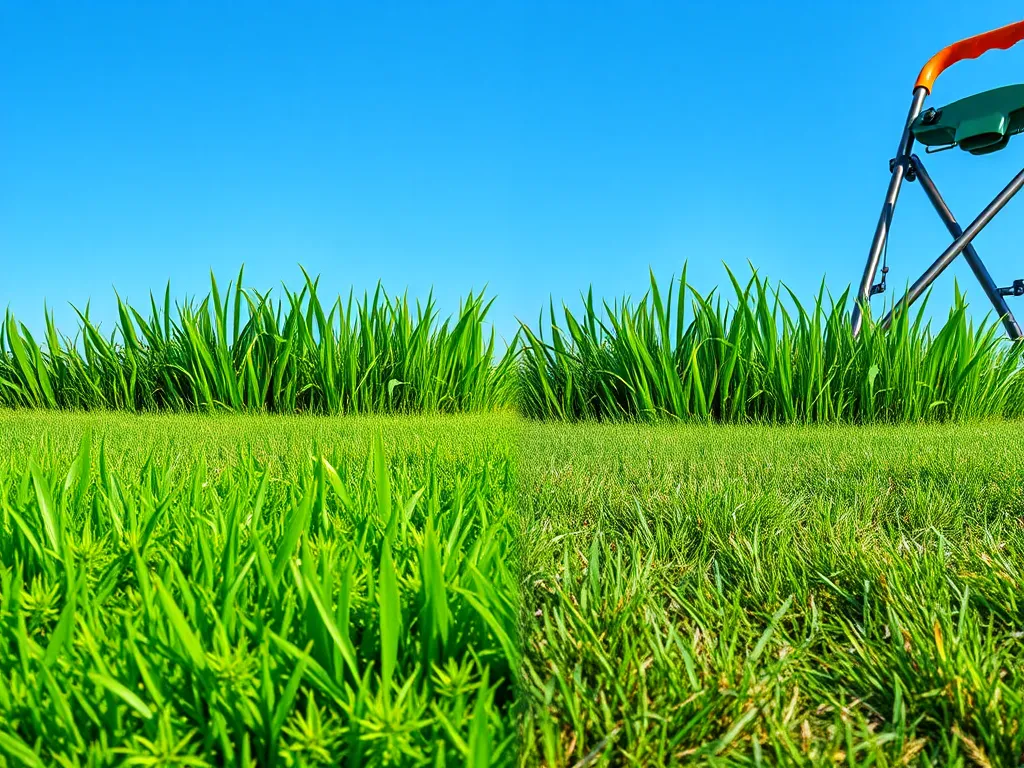The Importance of Mowing Frequency for Lawn Health

The Ultimate Guide to Lawn Care: Tips and Techniques for a Lush Green Lawn
Lawn Care is an essential aspect of maintaining a beautiful and healthy outdoor space. A well-cared-for lawn not only enhances the visual appeal of a property but also contributes to a positive environment by improving air quality and supporting local ecosystems. This guide will explore various practices, seasonal considerations, and common pitfalls to avoid in your lawn care routine.
Effective turf grass management is essential for creating a thick and healthy lawn that withstands heat and drought.
Understanding the specific needs of your grass type is fundamental in Lawn Care. Different species require distinct mowing, watering, and fertilization methods. By tailoring your lawn care practices to the specific requirements of your grass, you can achieve a robust and thriving lawn that withstands drought, pests, and other challenges.
Regular maintenance and attention are key components of effective Lawn Care. This involves mowing, watering, aerating, and fertilizing at appropriate times. The right lawn care practices can significantly enhance the vitality of your grass, contributing to a lush and vibrant lawn that becomes the envy of the neighborhood.
As with any aspect of gardening, Lawn Care also involves patience and observation. Keeping an eye out for signs of stress or disease can help you take early corrective measures. This proactive approach, paired with a solid understanding of lawn care practices, will yield rewarding results for any homeowner or gardener.
Adopting proper mowing habits not only enhances your lawn's appearance but also promotes its overall health and resilience.
In summary, Lawn Care requires knowledge, effort, and a willingness to adapt to the specific needs of your grass and the local environment. A little time invested in learning the best practices can lead to a rewarding and beautiful outdoor space for many years to come.
Mowing Practices
Best mowing techniques for lawn health include keeping your mower blades sharp, changing mowing patterns regularly, and ensuring you're not cutting more than one-third of the grass height at a time. Mowing too low can stress the grass, while mowing too high encourages weeds. Aim for a balanced approach that cuts the grass evenly without shocking it.
Regular lawn health maintenance ensures that your yard remains vibrant and lush throughout the seasons.
The height at which you mow your grass significantly affects its growth. Taller grass blades are more efficient at photosynthesis, helping the lawn recover from stressors like drought or disease. Ideally, cool-season grasses should be mowed at a height of 2.5 to 3.5 inches, while warm-season grasses prefer 1.5 to 2.5 inches to thrive well.
Understanding the right frequency for different grass types is crucial. Cool-season grasses, such as ryegrass and fescue, should be mowed more frequently in the spring and fall when they are actively growing. In contrast, warm-season grasses, like Bermuda and zoysia, thrive in summer and require regular mowing during this season to keep them healthy and encourage dense growth.
Grass Types
The differences in mowing frequency for cool-season grasses are substantial. These grasses generally thrive in the cooler temperatures of spring and fall, requiring more frequent mowing during these times. Mowing at the right intervals promotes healthy root development and minimizes diseases, helping maintain a thriving lawn.
Ideal mowing heights for warm-season grasses vary based on specific types but generally fall within the range of 1.5 to 2.5 inches. Mowing within this range not only promotes growth but also helps reduce the chances of disease while creating a fuller and denser lawn that can resist weeds more effectively.
Identifying grass types is essential for optimal care. Knowing whether you have cool-season or warm-season grasses will dictate your lawn care strategies. A simple way to differentiate is by monitoring grass color and growth patterns, and by paying attention to the time of year when your grass is lush and green versus when it goes dormant.
Seasonal Considerations
Mowing frequency changes with the seasons, with the highest activity seen during the peak growing seasons for your particular grass type. For instance, during spring and fall for cool-season grasses, mowing may need to occur weekly, while warm-season grasses in full summer growth may need mowing every 1-2 weeks depending on how rapidly they grow.
Weather has a profound effect on mowing schedules. Rain can delay necessary mowing, while extreme heat may necessitate adjusting mowing height to ensure grass revitalization. Conversely, drought conditions may require less frequent mowing to minimize stress on the grass and promote deeper root growth.
Adjusting mowing practices during droughts is crucial. Taller grass, when mowed appropriately during dry spells, can help retain moisture and protect the soil. It’s also advisable to suspend mowing if conditions are excessively dry to prevent damaging the grass.
Benefits of Regular Mowing
The impact of regular mowing on lawn aesthetics is significant. Consistent mowing creates an even and manicured appearance that enhances the overall curb appeal of your property. It also encourages healthy grass growth by minimizing the chance of pests and diseases.
Regular mowing promotes healthier grass growth by allowing more sunlight to reach the lower blades, facilitating better photosynthesis. This results in a denser and stronger lawn that can withstand various environmental stresses.
Weed prevention is another benefit of consistent mowing. By keeping the grass at optimal heights, you can outcompete weeds for sunlight and nutrients, reducing their growth and establishment in your lawn.
Common Mowing Mistakes
Over or under mowing can have adverse consequences on your lawn's health. Over-mowing can stress the grass, while under-mowing allows weeds to flourish, both resulting in poor lawn quality. Finding a balance is crucial for a healthy lawn.
There are many lawn care myths about mowing frequency, with some homeowners believing they need to mow constantly during the growing season. In reality, understanding the specific needs of your grass type and adjusting your basis for frequency will yield better outcomes.
Tips to avoid scalping your lawn include using sharp mower blades, adjusting the mower height based on the grass needs, and avoiding mowing during dry or extreme heat periods. Maintaining a healthy lawn without scalping is vital for its long-term health.
